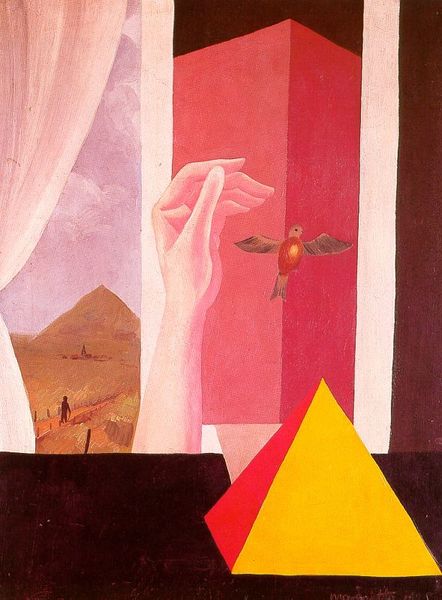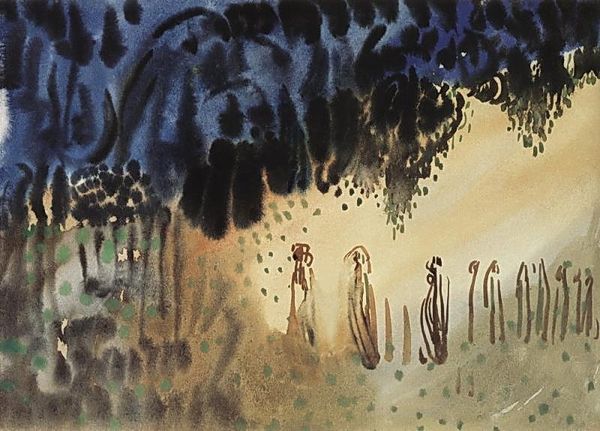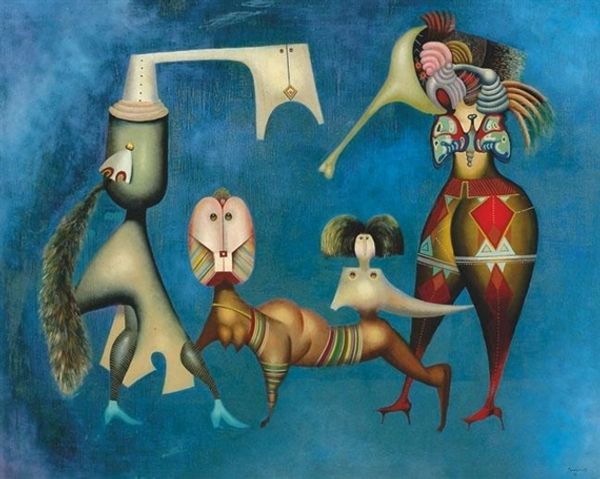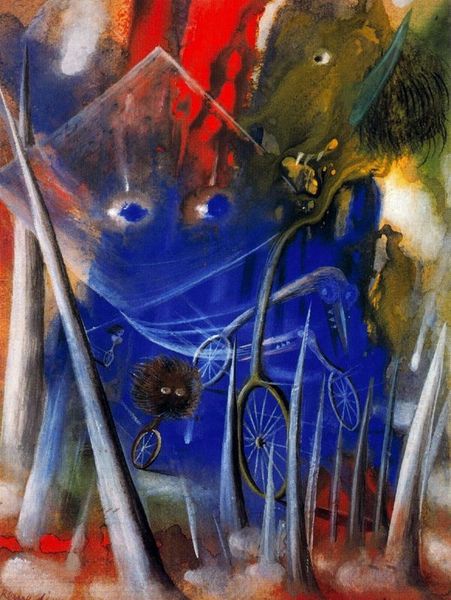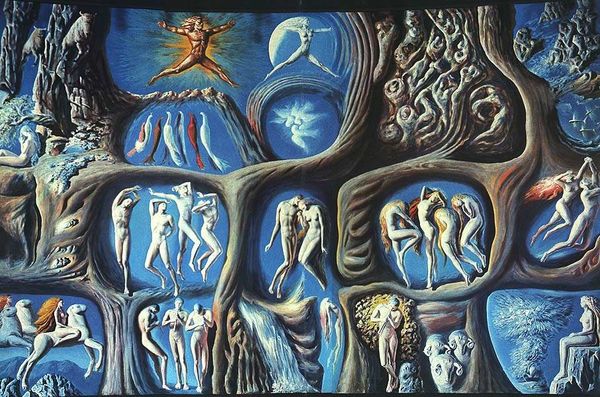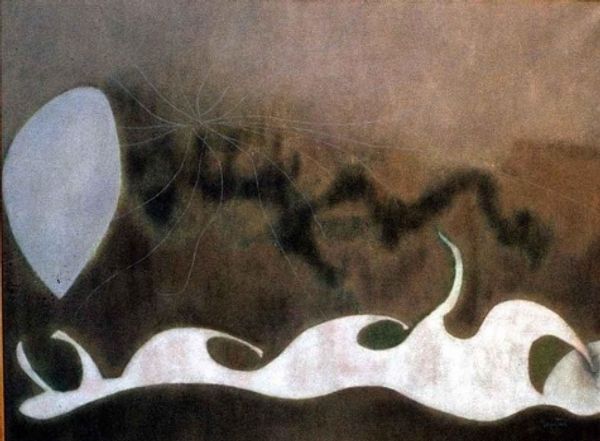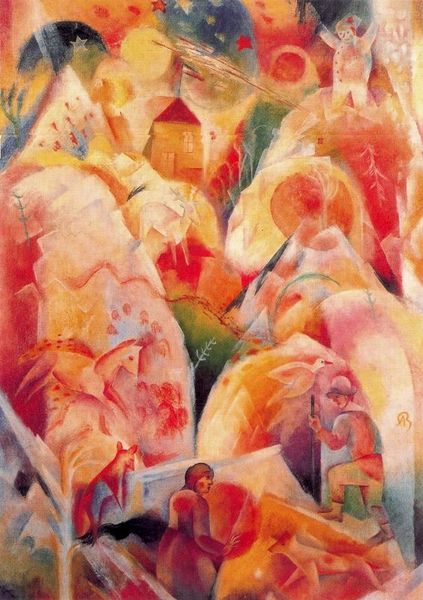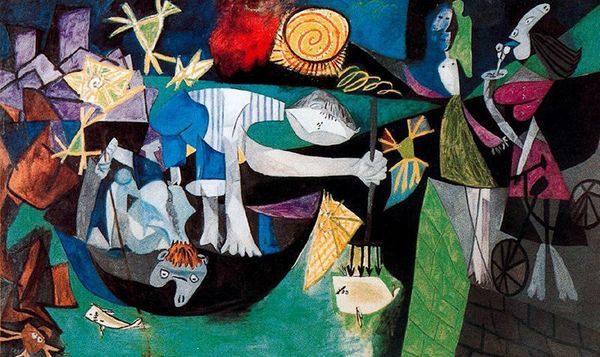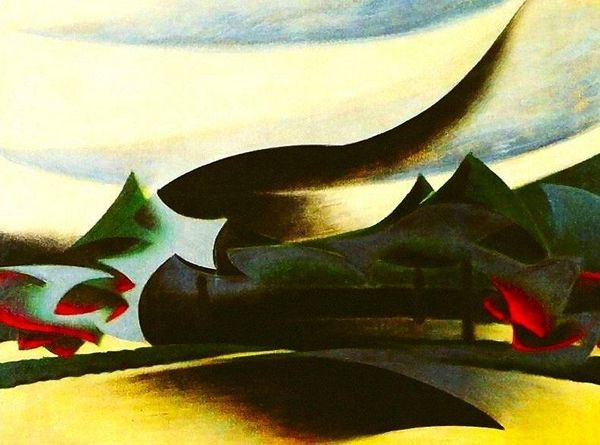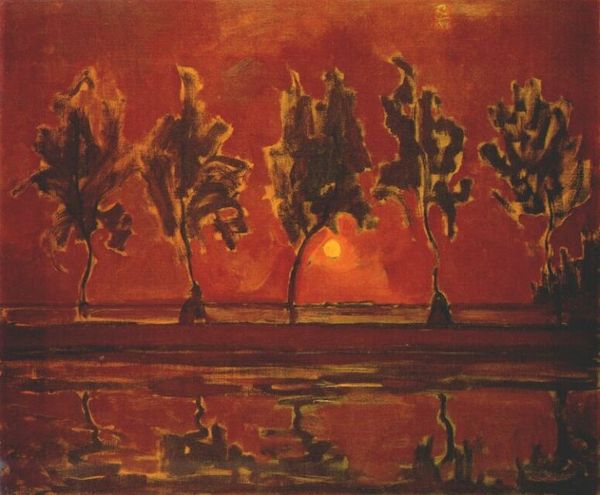
painting, acrylic-paint
#
acrylic
#
painting
#
landscape
#
fantasy-art
#
acrylic-paint
#
figuration
#
oil painting
#
surrealism
Copyright: Remedios Varo,Fair Use
Editor: Here we have Remedios Varo's painting, "The Desire," made with acrylic paint. I'm immediately struck by the fantastical, almost dreamlike quality of the landscape and how solid, geometric landforms seem to be rendered in melting candle wax. What draws your attention to this work? Curator: As a materialist, I'm captivated by Varo's specific manipulation of paint to create this illusion. The red hill-forms contrast against the creamy wax structures, drawing my eye to the production of texture, where rough material contrasts with fluid artifice. Considering her surrealist style, it could reflect on industrialized desire or fabricated emotion, using a surreal, otherworldly industrial production process. What role do you think the candle wax imagery plays in reflecting social norms? Editor: I hadn't considered the implied industrial element! So, the 'desire' in the title might be referring to something manufactured or processed, and less about a personal feeling. The plants growing next to the fire also complicate my understanding -- are they natural or artificial? Curator: Exactly. The contrast between organic and manufactured raises critical questions. Were these acrylic paints readily available or expensive to acquire? These small details provide crucial insights into her studio and socio-economic context. Consider also the repetitive pyramidal structures; this might mirror repetitive labor practices within an industrial context. How does that reading resonate with your perspective on Surrealism and desire? Editor: That connection makes so much sense. It highlights the commodification of even intangible things like dreams and yearnings. I initially interpreted this as something deeply personal but looking at the materiality shifts the whole perspective. Curator: Right, examining material production unveils the intricate layers within what we might initially perceive as fantastical. It reminds us that art, like any other commodity, exists within networks of labor and consumption. Editor: That really makes me think differently about not just this piece but about how we approach understanding art in general. Thank you!
Comments
No comments
Be the first to comment and join the conversation on the ultimate creative platform.

